See inside a new pilotless cargo plane, which has a nose-loading door like the Boeing 747 and can fly up to 200 miles
Autonomous electric planemaker Pyka has developed the world's largest zero-emission freighter.
The aircraft, known as Pelican Cargo, is pilotless and can carry up to 400 pounds across 200 miles.
Company founder and CEO Michael Norcia says the plane will start with inter-island transport.
Another pilotless cargo plane is planning to enter the market.
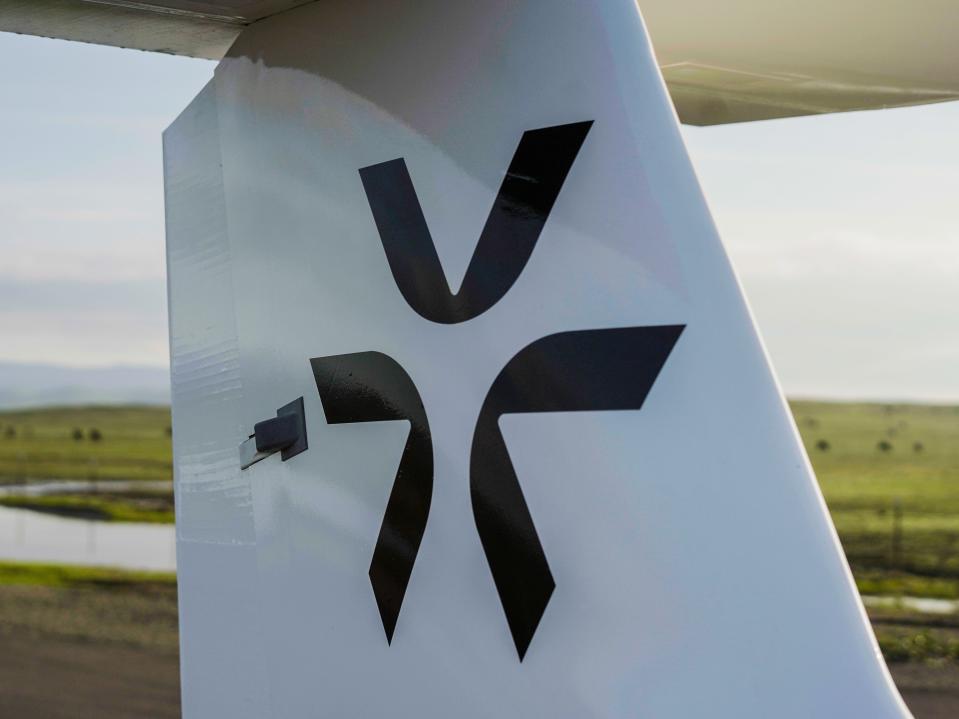
Source: Pyka
On Monday, autonomous electric planemaker Pyka announced Pelican Cargo, which the company says is the world's largest zero-emission freighter.
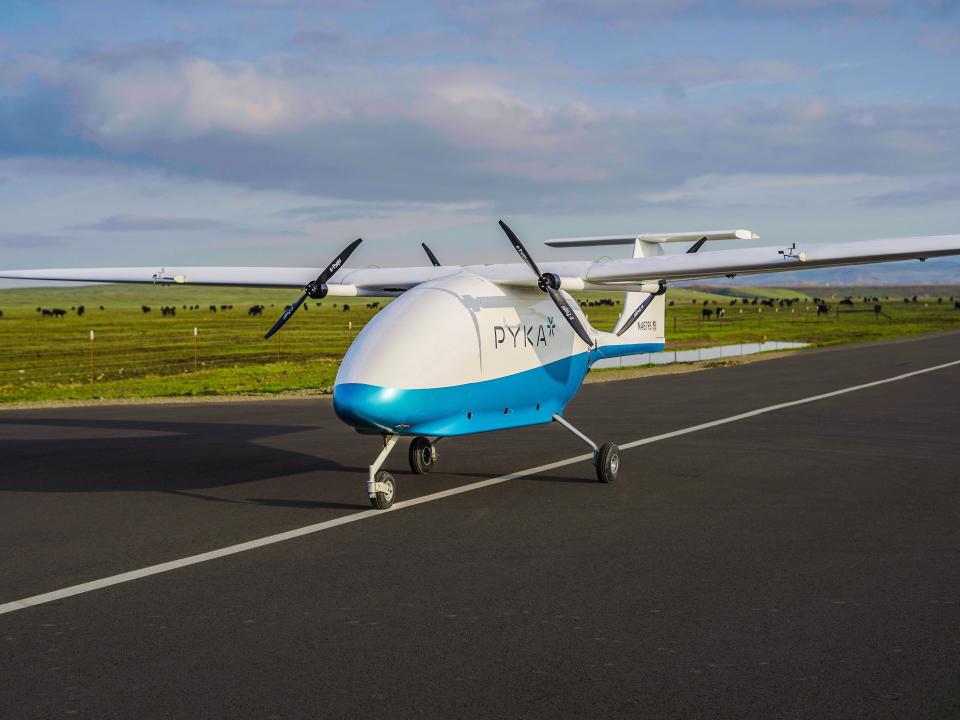
Source: Pyka
The aircraft is based off the company's successful agricultural plane, called Pelican Spray, which was built for low-impact crop dusting.
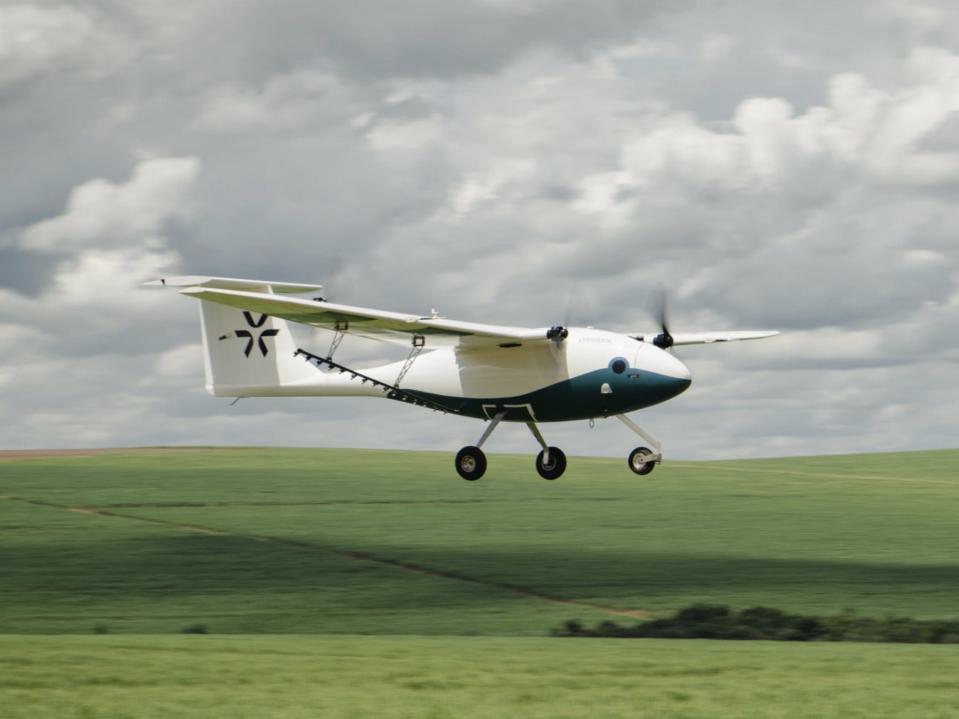
Source: Pyka
Company founder and CEO Michael Norcia told Insider about 90% of Pelican Cargo, including the wings, tail, and battery, was taking from Pelican Spray.
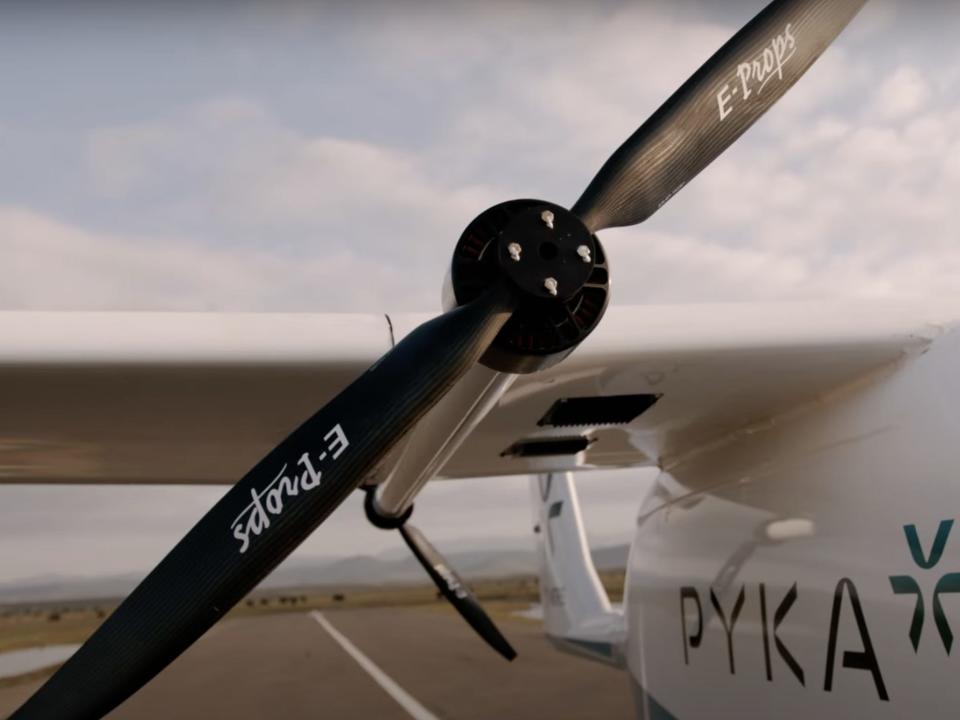
Source: Pyka
The resulting product is the "first autonomous vehicle of its class," meaning, like its predecessor, it is controlled remotely.
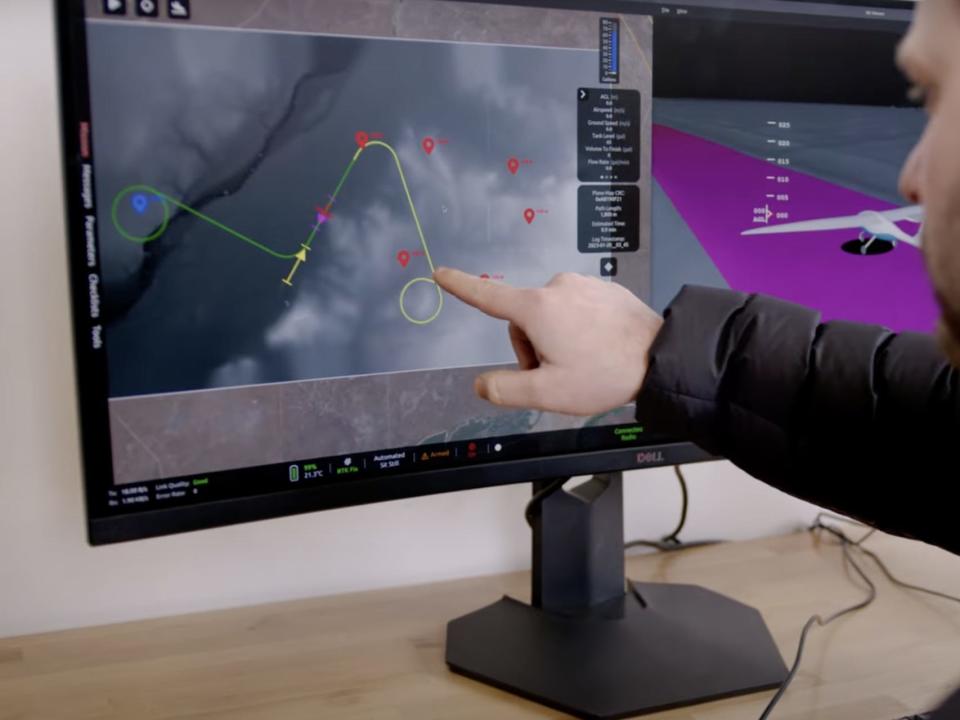
Source: Pyka
Norcia said computers will operate the aircraft, and the human involved could be anywhere in the world thanks to SATCOM internet connectivity installed onboard.
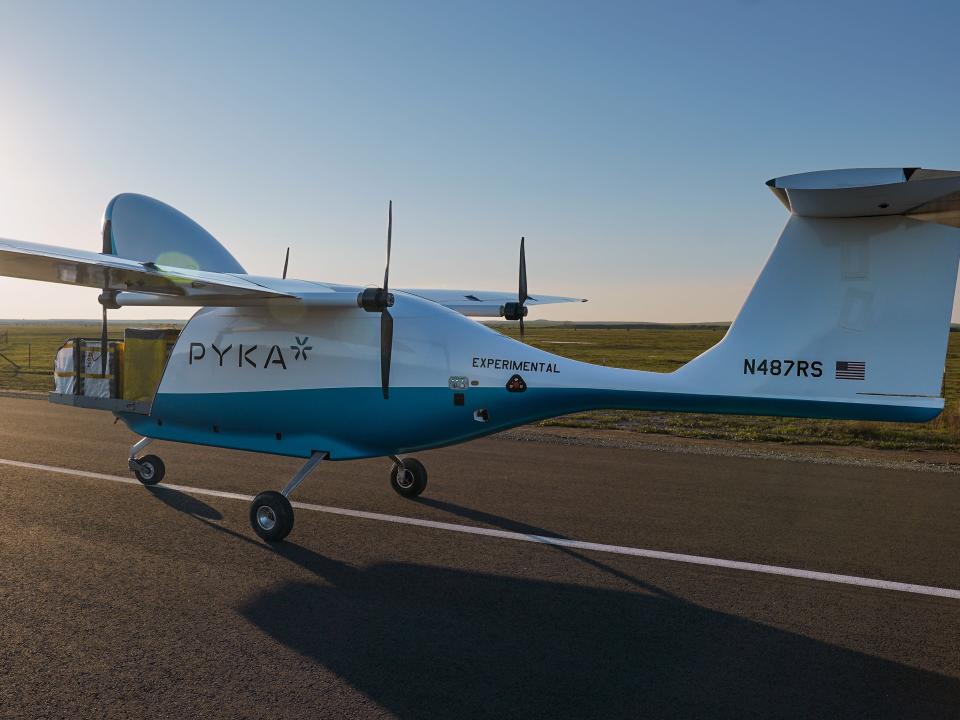
Source: Pyka
He further explained there are several redundancies, like a backup computer. However, if anything goes wrong, the operator can intervene: "We're working on parachute systems so the operator has a fairly simple way to terminate the flight."
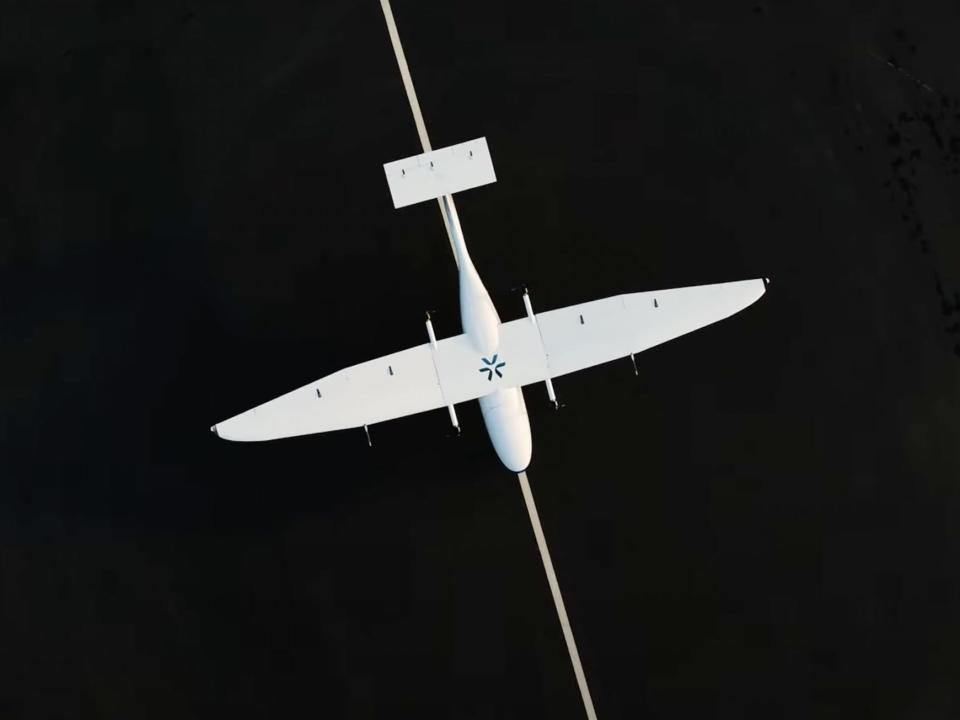
Source: Pyka
Because the plane is electric, it does not need fuel but instead runs on a rechargeable battery located in the belly of the aircraft. It can also be swapped if there is not a recharge station available.
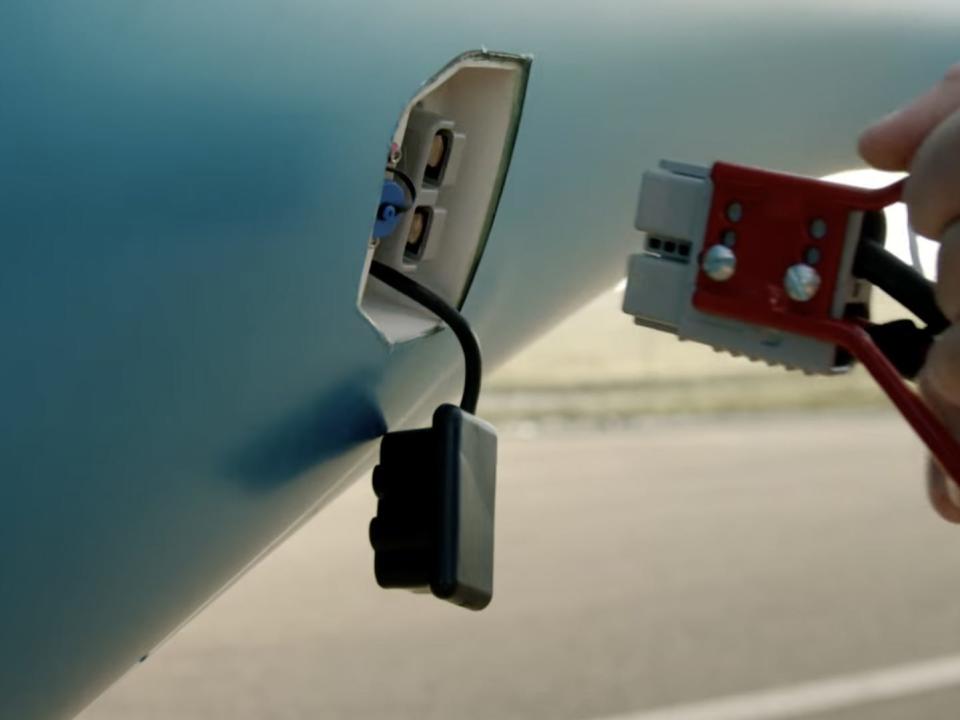
Source: Pyka
The charge can power the plane up to 200 miles. Norcia says inter-island operations is the best place for Pelican Cargo to start but hopes to branch out into remote places like Canada later.

Source: Pyka
"We want to deliver cargo between two areas that have relatively poor infrastructure," Norcia said. "And, we're looking for a way to do that affordably so they can run daily deliveries between places that historically only get service maybe once a week."
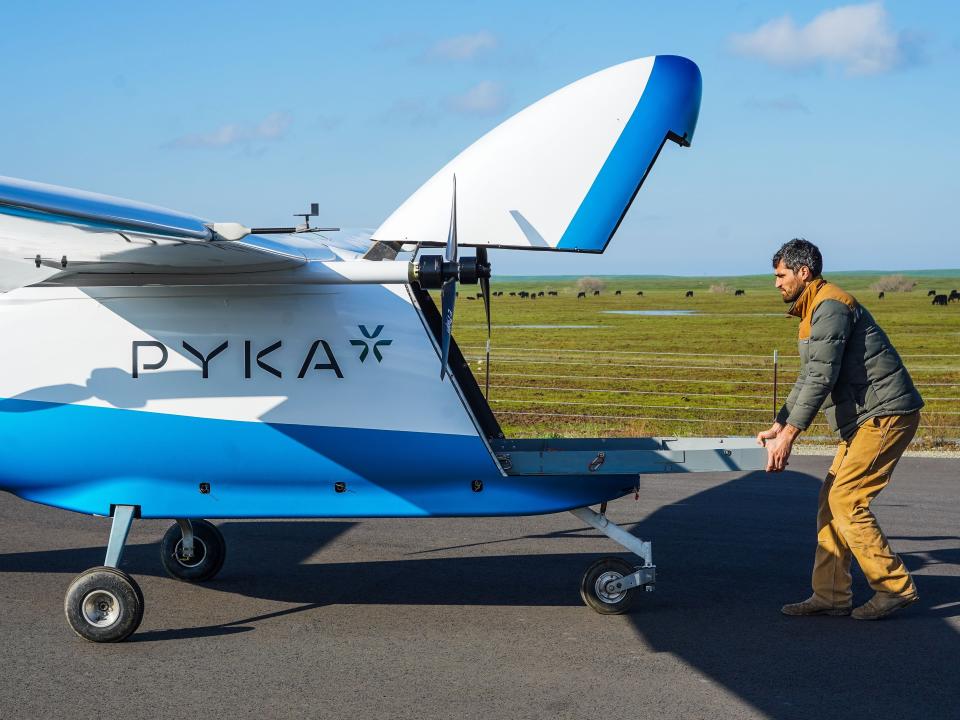
Source: Pyka
Pyka's aircraft will be leased, and they cost around $15 per hour to operate, which is much lower than the $500-$1,000 per hour figures other small cargo aircraft can cost, according to Norcia.

Source: Pyka
In total, customers will have a 400-pound payload and 66 cubic feet of cargo space to work with, and the packages will be loaded through a nose-door, similar to the Boeing 747.
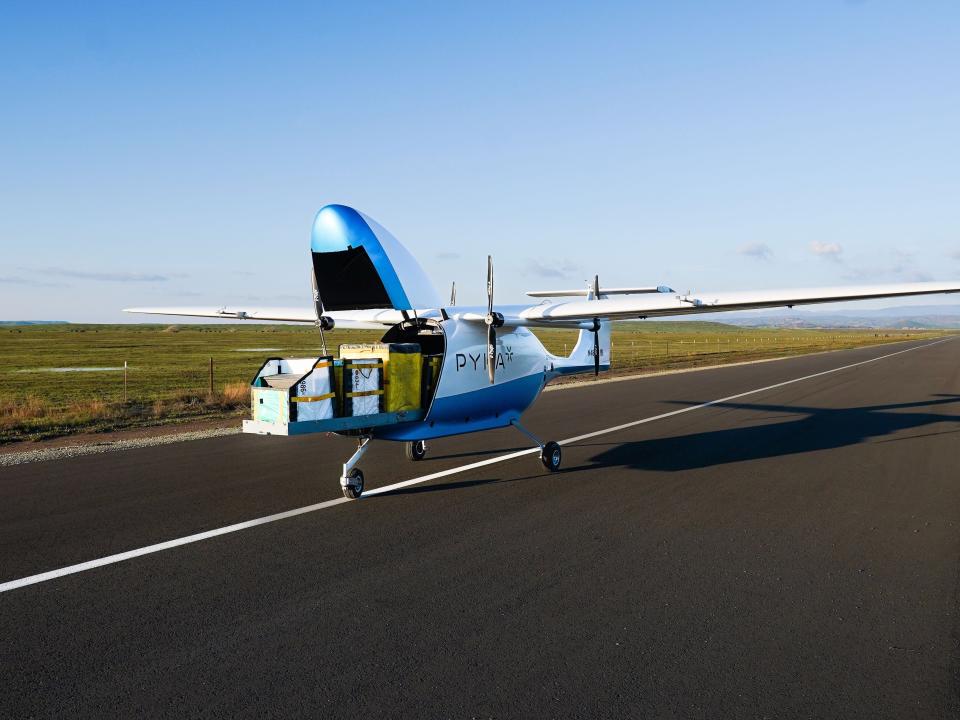
Source: Pyka
In fact, Pelican Cargo will be one of the few aircraft in existence with a nose-loading door, joining the ranks of the Antonov An-124 Ruslan…
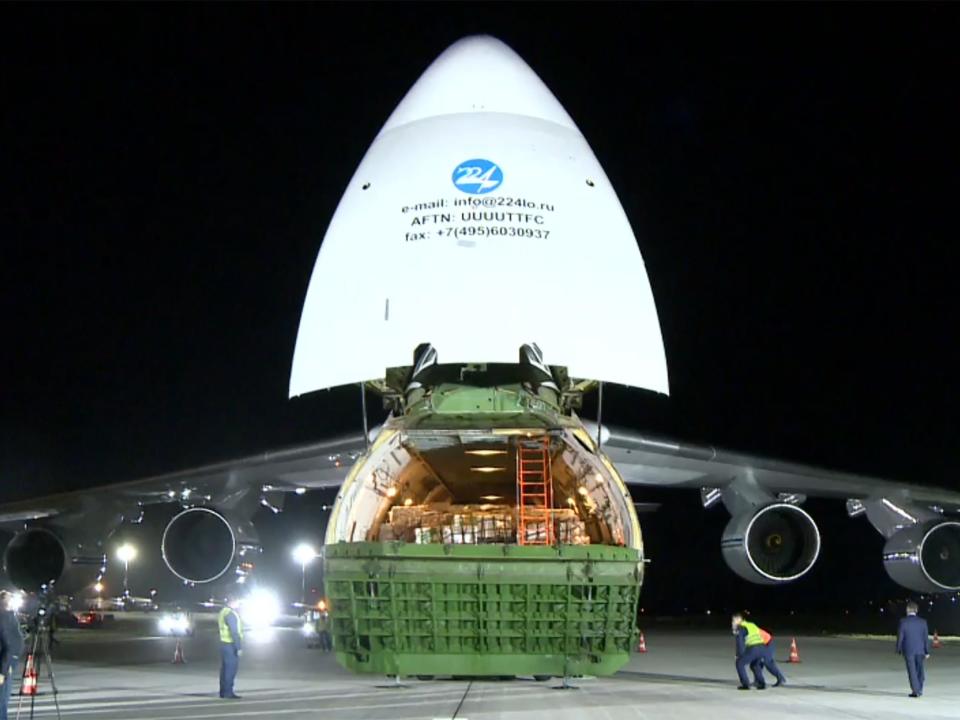
…the Airbus Beluga and Beluga XL jets…

…and the military's C-5 Galaxy. On these planes, operators like the nose door for loading oversized items without having to first disassemble them, like helicopters.
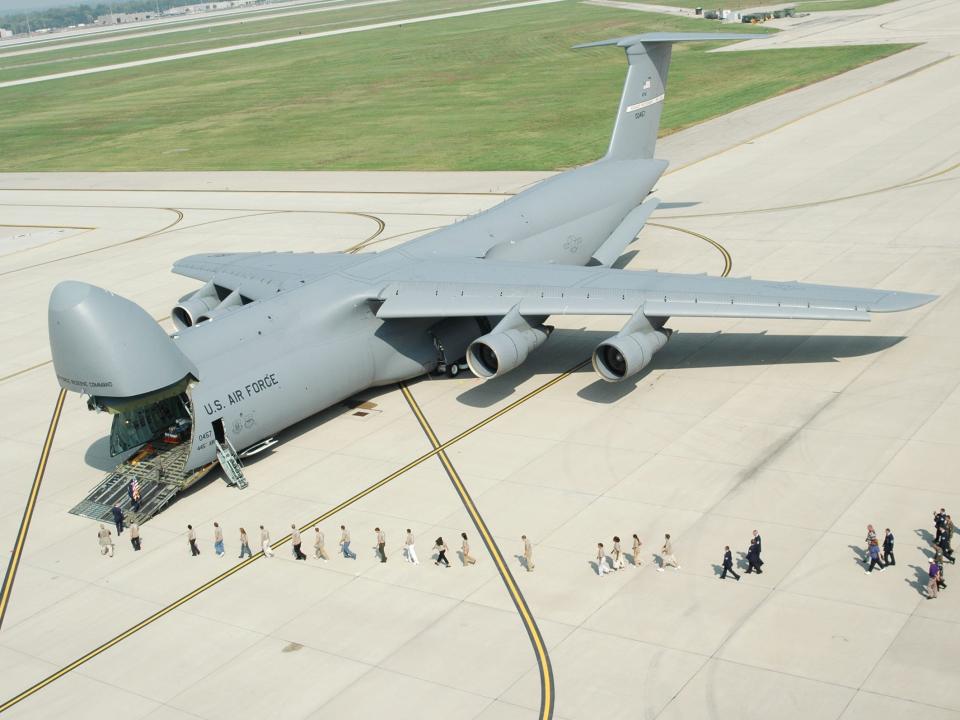
Granted, these aircraft are much larger than Pyka's, but the nose loader offers unique benefits to big and small aircraft alike.
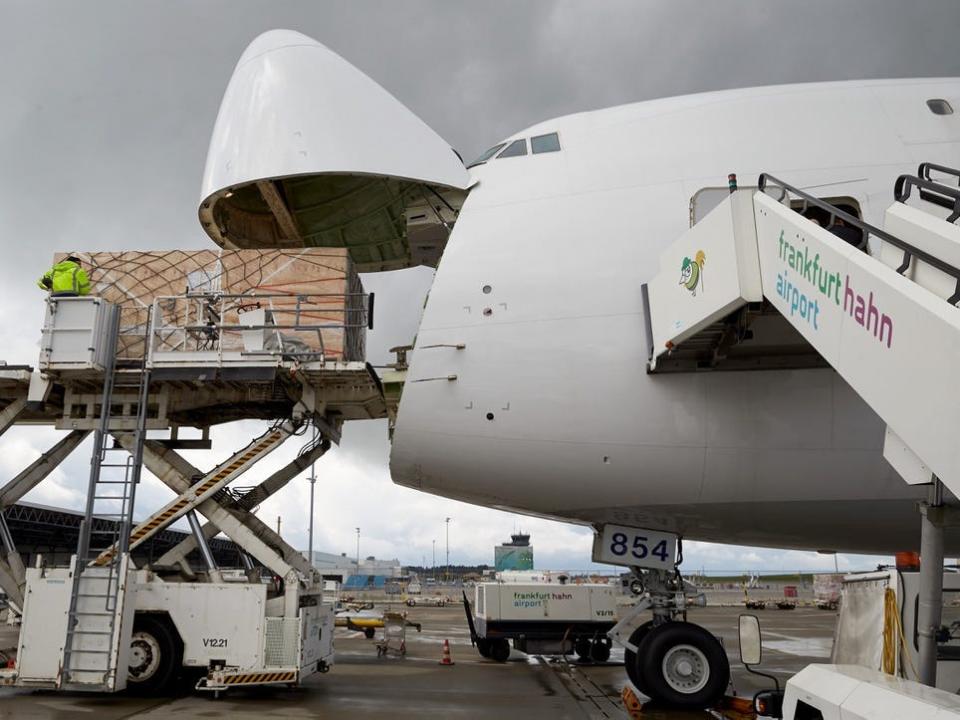
Source: Pyka
Norcia told Insider that when speaking with potential customers, many said they didn't want a plane that required a lot of ground equipment that could bump into the aircraft and damage it.
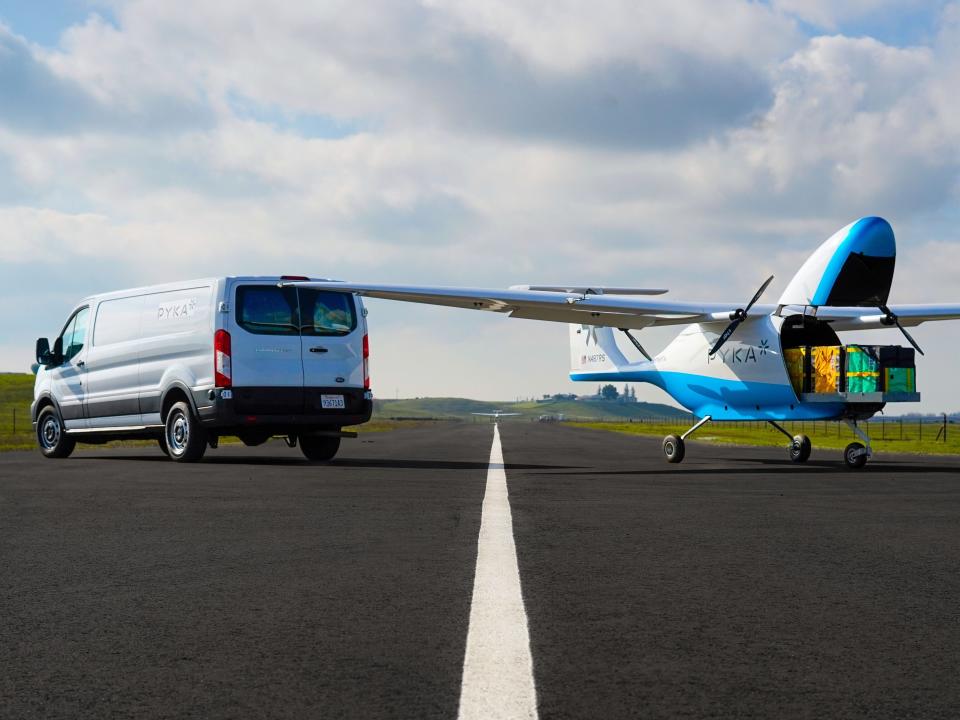
Source: Pyka
"The nose door allows you to fully load this cargo sled prior to the aircraft arriving and then just simply wheel the sled over to the aircraft and slide it in through the nose door," he said.
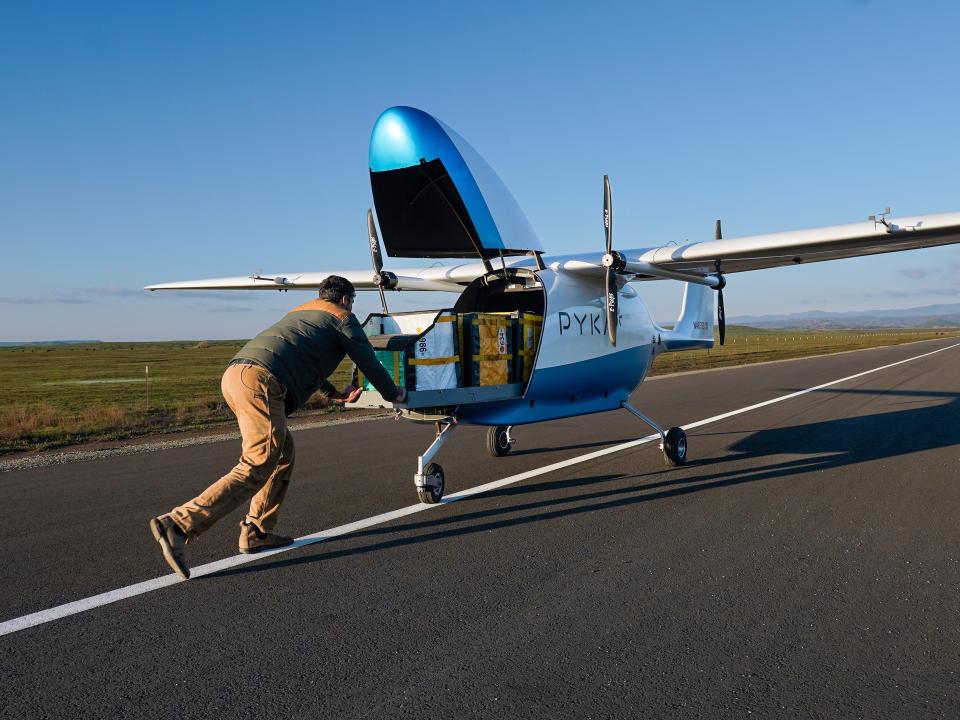
Source: Pyka
With a full load, Pelican Cargo only needs a 600-foot runway to take off and can land on pavement, grass, dirt, and gravel. This makes last-mile delivery accessible to more places.
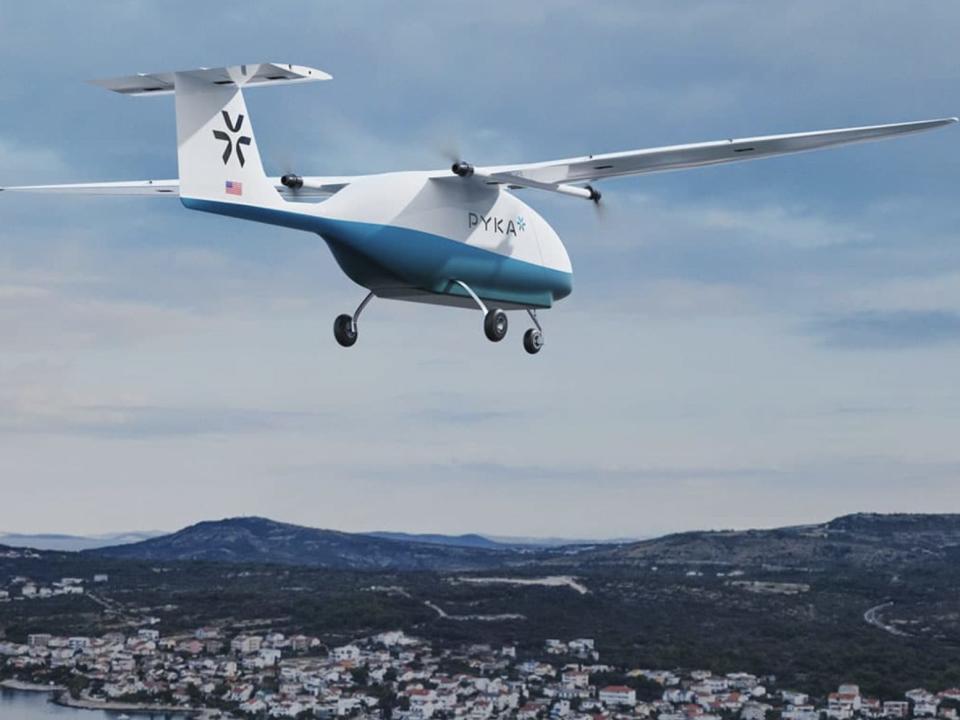
Source: Pyka
Currently, the cargo plane is going through "rigorous" testing at Pyka's facility in Northern California, like filling it with sand to demonstrate its limits, Norcia told Insider.
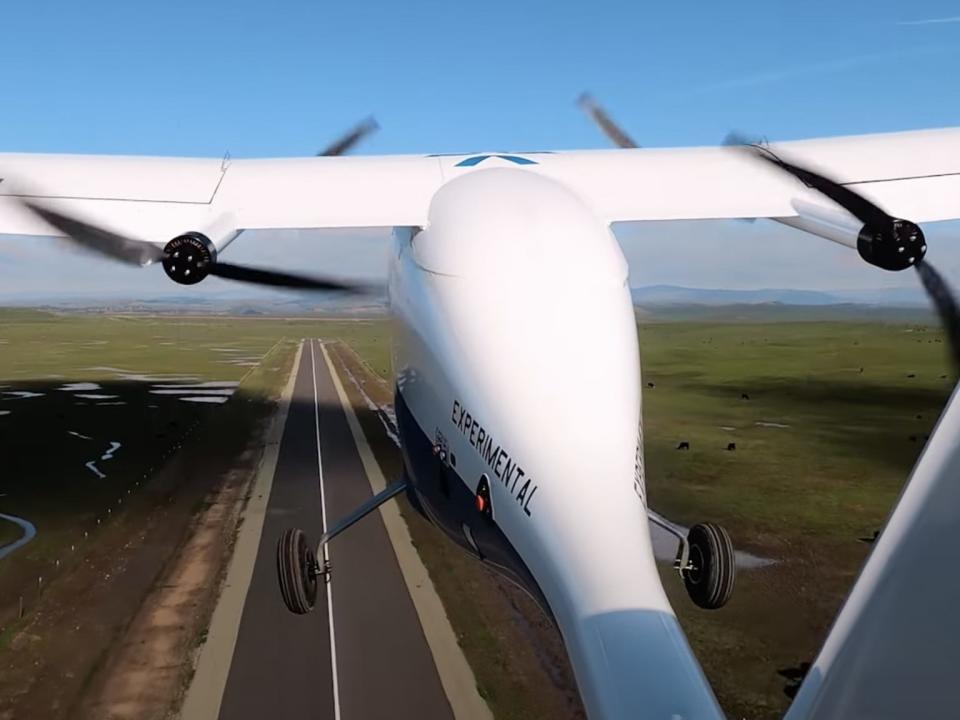
Source: Pyka
So far, the company has secured over 80 orders from three customers in North America and Europe, and it expects the first commercial flight to take place in the second half of 2023.
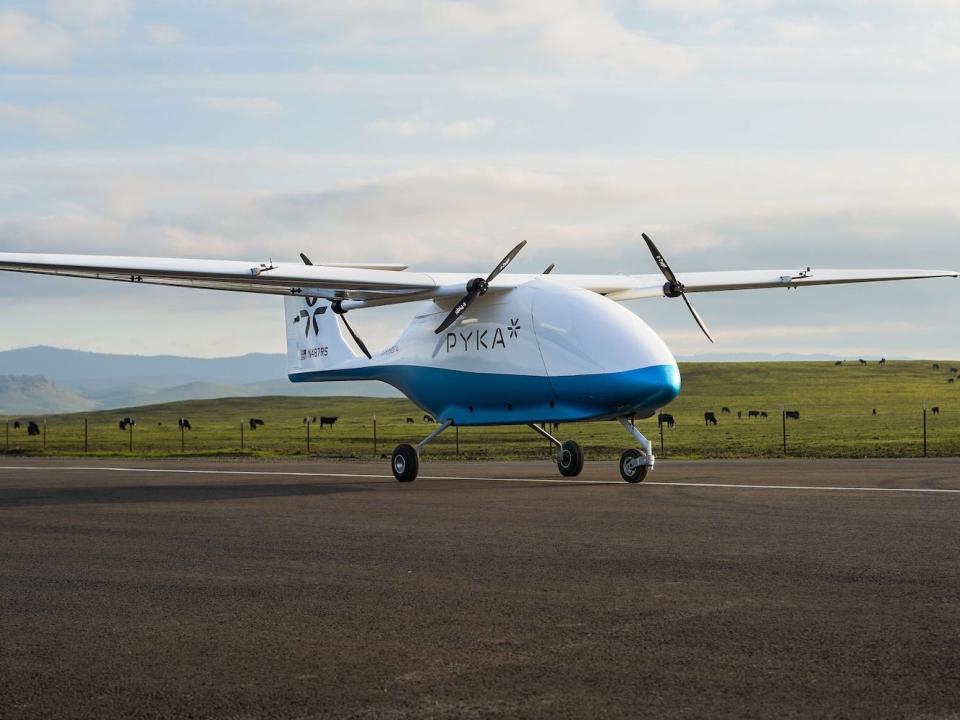
Source: Pyka
But, it's not the only pilotless cargo plane hoping to hit the market this year. Bulgarian manufacturer Dronamics has built its own freighter called Black Swan.
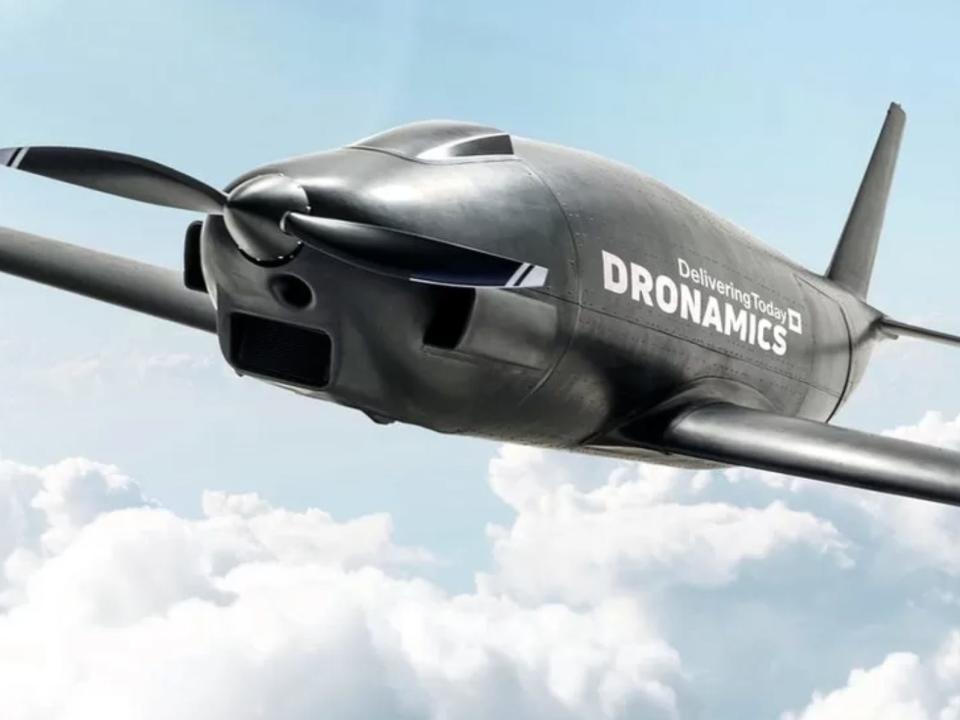
The aircraft is already certified in the European Union and plans to start operations as the world's first "cargo drone airline."
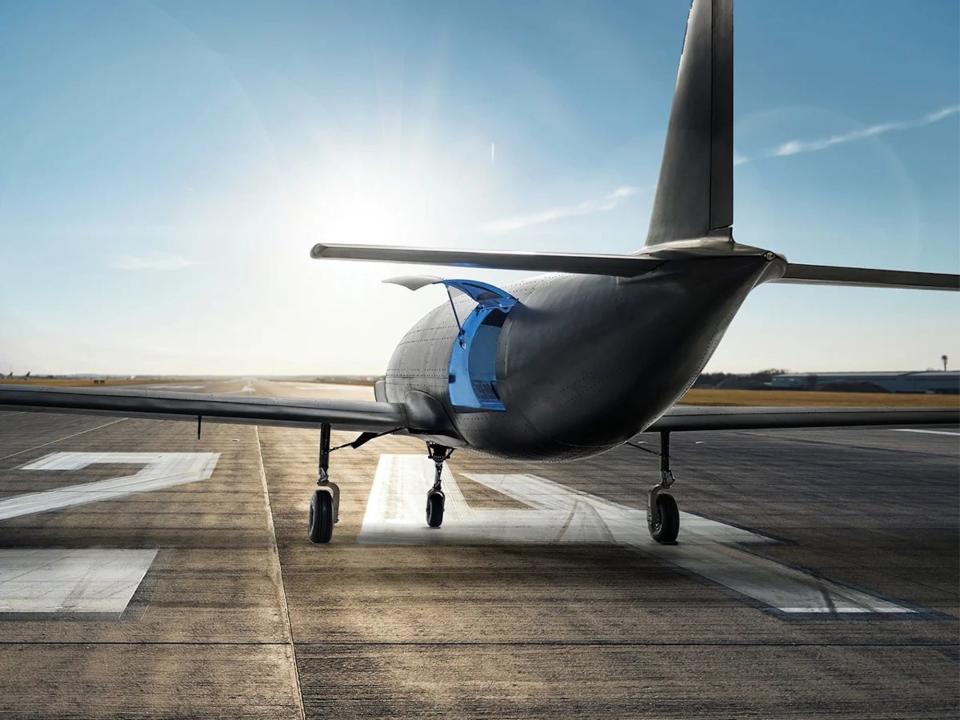
Meanwhile, California startup Natilus is building a fleet of autonomous cargo planes to address the pilot shortage and the environmental impact of freight transport.
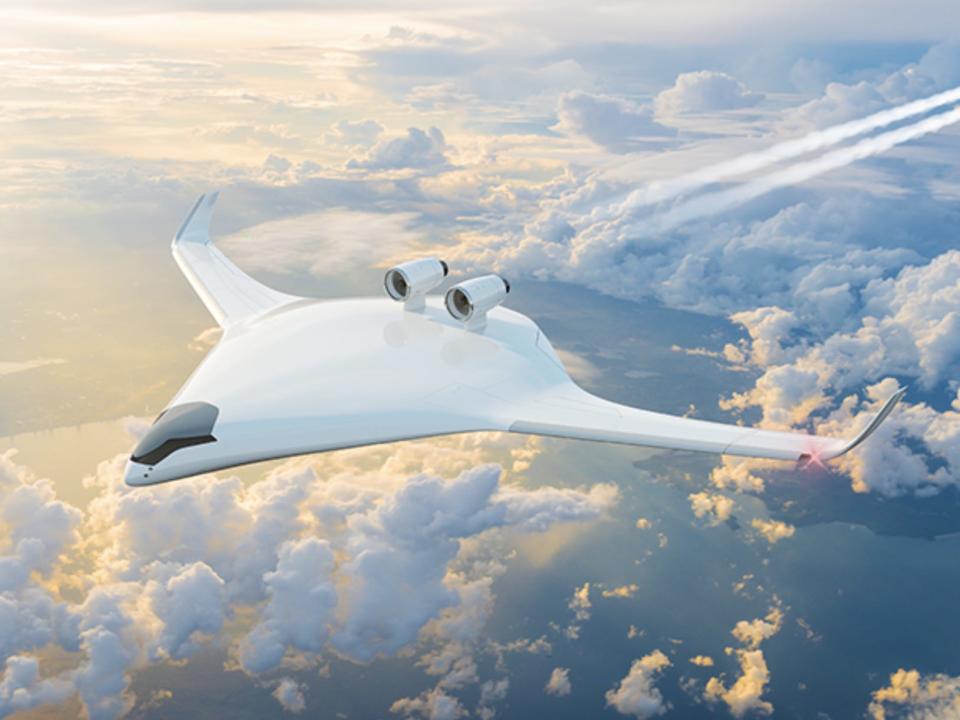
Source: Natilus
Read the original article on Business Insider


